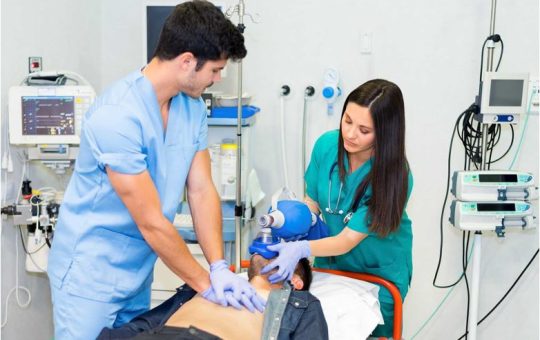
First Aid Level 1
Course Overview
The First Aid Level 1 course is an introductory program designed to equip participants with essential life-saving skills and basic knowledge to respond effectively in emergency situations. This course covers fundamental first aid techniques, ensuring learners are confident in providing initial care until professional medical help arrives. Ideal for individuals in workplaces, schools, or community settings, this training lays the foundation for safety and preparedness in everyday life.
Benefits
- Essential Life-Saving Skills: Learn to handle common emergencies, including cuts, burns, and choking.
- Improved Confidence: Feel empowered to take quick and effective action during critical moments.
- Workplace Compliance: Meet legal requirements for basic first aid training in various industries.
- Versatile Application: Applicable for work, home, and community settings.
- Foundation for Advanced Training: Build a strong base to pursue higher levels of first aid or emergency response training.
Learning Outcomes
Upon successful completion of this course, participants will be able to:
- Recognize and assess emergency situations quickly and accurately.
- Administer basic first aid for common injuries and medical conditions.
- Perform CPR (Cardiopulmonary Resuscitation) on adults, children, and infants.
- Manage bleeding, burns, fractures, and choking incidents effectively.
- Use basic first aid equipment and resources appropriately.
- Communicate effectively with emergency services and other responders.
Study Units
Unit 1: Introduction to First Aid
- Importance of first aid.
- Legal and ethical considerations in providing care.
- The role and responsibilities of a first aider.
Unit 2: Assessing the Situation
- Scene safety and risk assessment.
- Understanding the primary and secondary survey.
- Identifying signs of life and consciousness.
Unit 3: Basic Life Support (BLS)
- Performing CPR on adults, children, and infants.
- Managing airway obstructions (choking).
- The recovery position for unconscious individuals.
Unit 4: Managing Injuries and Illnesses
- Controlling bleeding and treating wounds.
- Managing burns, scalds, and fractures.
- Recognizing and responding to medical emergencies (e.g., heart attacks, strokes).
Unit 5: Practical Application
- Hands-on practice of CPR and first aid techniques.
- Role-playing emergency scenarios.
- Use of basic first aid kits and equipment.
Career Progression
While First Aid Level 1 is an entry-level course, it can serve as a stepping stone to advanced qualifications such as:
- First Aid Level 2 and Level 3: Learn more comprehensive techniques for workplace or specialized first aid.
- Emergency First Responder: Gain expertise in handling severe and complex emergencies.
- Occupational Health and Safety Roles: Become a designated first aider in professional environments.
- Firefighter or Rescue Training: Combine first aid skills with advanced rescue techniques.
- Trainer/Instructor in First Aid: Teach basic first aid to others after pursuing further certifications.
This course is ideal for anyone looking to contribute to a safer community and workplace while advancing their knowledge and skills in emergency care.
Our assessment process is designed to ensure every learner achieves the required level of knowledge, skills, and understanding outlined in each course unit.
Purpose of Assessment
Assessment helps measure how well a learner has met the learning outcomes. It ensures consistency, quality, and fairness across all learners.
What Learners Need to Do
Learners must provide clear evidence that shows they have met all the learning outcomes and assessment criteria for each unit. This evidence can take different forms depending on the course and type of learning.
Types of Acceptable Evidence
Assignments, reports, or projects
Worksheets or written tasks
Portfolios of practical work
Answers to oral or written questions
Test or exam papers
Understanding the Structure
Learning outcomes explain what learners should know, understand, or be able to do.
Assessment criteria set the standard learners must meet to achieve each learning outcome.
Assessment Guidelines
All assessment must be authentic, current, and relevant to the unit.
Evidence must match each assessment criterion clearly.
Plagiarism or copied work is not accepted.
All learners must complete assessments within the given timelines.
Where applicable, assessments may be reviewed or verified by internal or external quality assurers.
Full learning outcomes and assessment criteria for each qualification are available from page 8 of the course handbook.
Top Courses
No results found.
Related Courses
Let's Get in touch
Deleting Course Review
Course Access
This course is password protected. To access it please enter your password below:



